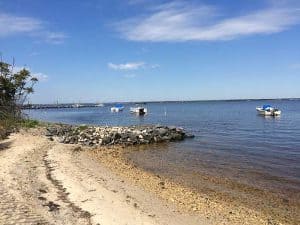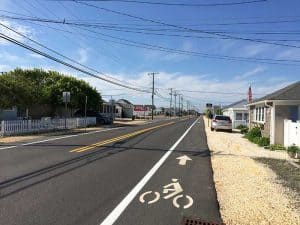
BERKELEY – In the ongoing hearings on whether South Seaside Park should be allowed to de-annex themselves from Berkeley Township, the town planner stated that splitting them apart would make them far less than their whole.
Residents of South Seaside Park (SSP), which is just north of Island Beach State Park on the barrier island, have been wanting to leave for a decade or longer. They claim they are not getting the services that their taxes are paying for. Mainland Berkeley residents have been fighting to keep them together, stating that the mainland residents would be hit with too many taxes if they left.

The August meeting of the Planning Board was the conclusion of a presentation by the township planner, Stanley Slatechka, an employee of T&M Associates. It had continued from the July Planning Board meeting. At the August meeting, he finished up his presentation and summed up the reasons he felt that SSP splitting off from Berkeley would be bad for both parties.
After SuperStorm Sandy, Berkeley received grant funding that the township used for planning purposes. A lot of engineering work was done to predict where future flooding would be and to suggest ways to prevent or minimize damage. Quite a large amount of this work was done in South Seaside Park, he said.
Scores of reports, such as the 2015 Master Plan Re-examination Report, the South Seaside Park Neighborhood Plan, and the Coastal Neighborhood Plan were conducted to address issues in the area. The planning board took input from SSP residents during this process. For example, multi-family development was originally going to be allowed, but the residents had it removed.
“The town went above and beyond what was the minimum requirements for public input,” he said.
The process doesn’t stop at reports, he said. Planning efforts are “evolutionary and ongoing,” with experts making recommendations on how better to improve neighborhoods while keeping the qualities that give them their identity.
Due to Berkeley’s diligence, the entire town is ranked a 6 on the Community Rating System, which judges how prepared a town is for flooding. It translates into a 20 percent discount on flood insurance rates for homeowners, he said. SSP residents have benefited greatly from the work that Berkeley did to obtain that rating.
Wind speed and other factors were monitored by Notre Dame to learn more about shore storms, he said. This would not have happened without SSP being part of Berkeley.

Councilman John Bacchione asked if this data could be applied to other neighboring towns, letting them benefit from the work. Slatechka said that the data can be informative in a general way, but it is very specific to SSP.
Slatechka, the planner for Berkeley, went on to rebut the SSP’s planner’s claim that there’s not enough in the town’s master plan that addresses SSP. He said that everything is connected. For example, Berkeley working toward getting a town center in Bayville will bring in new ratables and bring down taxes everywhere, including the barrier island.
In conclusion, he restated that Berkeley and SSP would both suffer if they were separated. He listed the many benefits why keeping SSP is good for Berkeley, including the tax base, and that the population in SSP is among the township’s most employed and educated.
SSP leaving would be detrimental to SSP, he said, explaining that the barrier island residents would suffer from the amount of planning and engineering work Berkeley has done. It would result in “diminished resiliency and capacity to respond” to serious storms.
The attorney for the South Seaside Park petitioners will be allowed to question Slatechka at a future Planning Board meeting.






